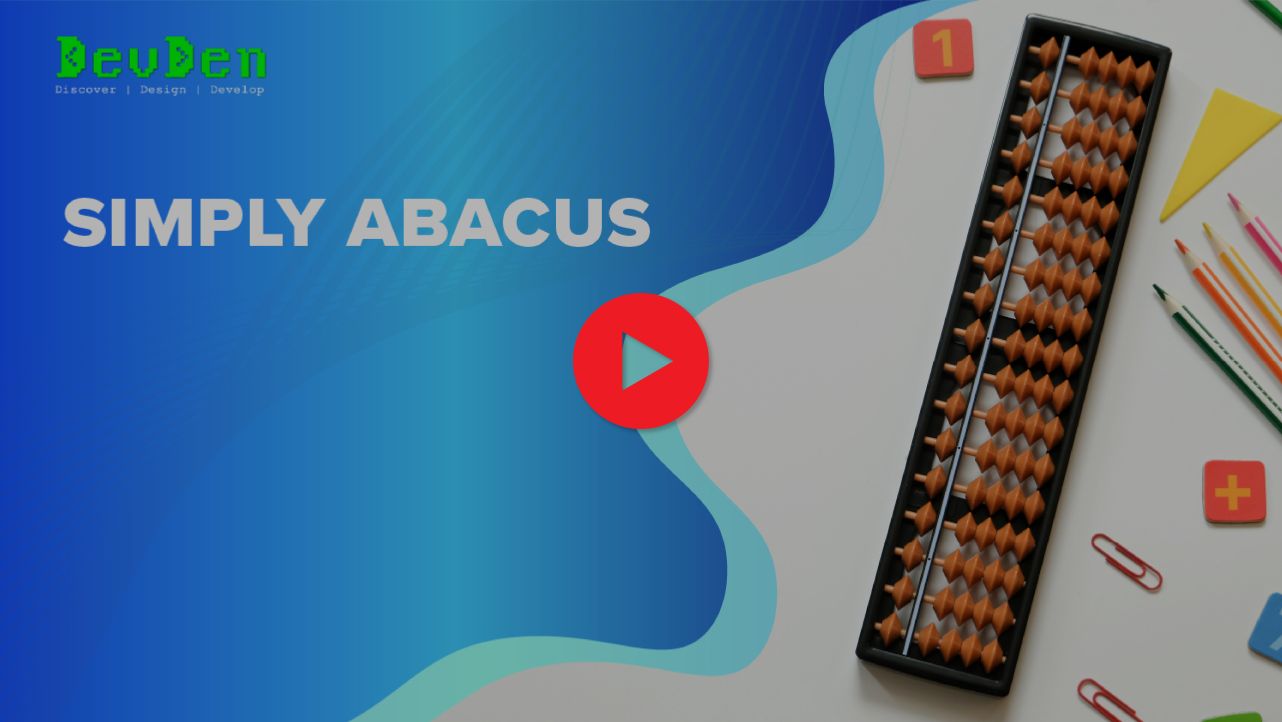Learning beyond the classroom with AR/VR technology
OVERVIEW
Augmented Reality (AR) and Virtual Reality (VR) technologies have great potential to revolutionise education by creating immersive and engaging learning experiences. . They make learning more interactive, allowing students to visualise complex concepts and understand them better. They also provide a more personalised learning experience, as students can choose to focus on the content that interests them the most.
FEATURES OF AR/VR IN EDUCATION
VIRTUAL FIELD TRIPS
VR technology can be used to take students on virtual field trips to places that are difficult or impossible to visit in real life, such as ancient ruins, outer space, or deep ocean environments. Also recreates historical events and periods, allowing students to experience and understand history in a more engaging and interactive way.
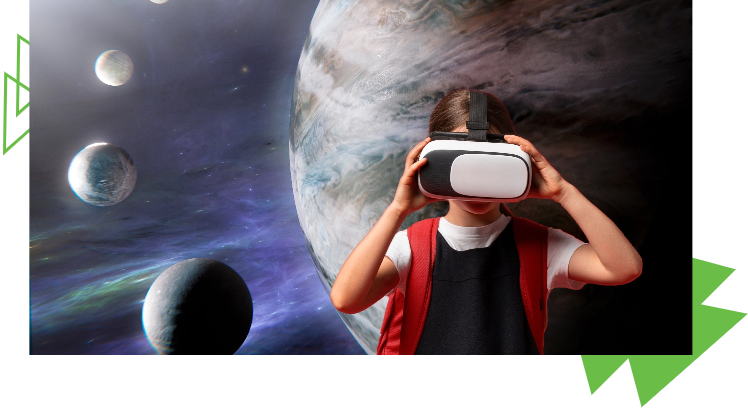
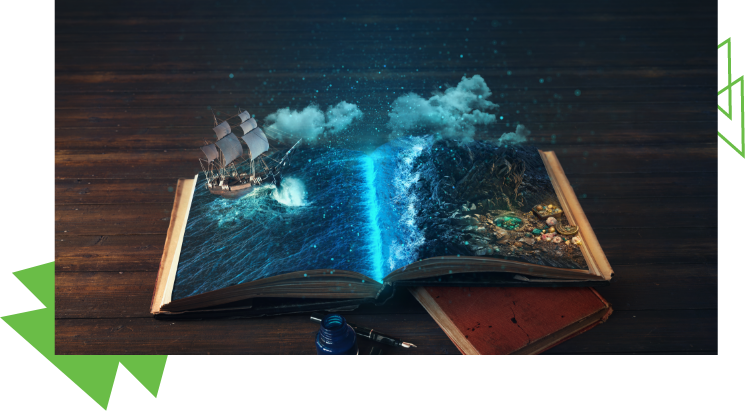
INTERACTIVE TEXTBOOKS
Interactive AR textbooks enhance the learning by allowing digital content to be overlaid on the real world, creating an interactive and immersive learning experience. With an AR interactive textbook, students can use their smartphone or tablet to scan images in the book and access additional digital content.
INTERACTIVE TEXTBOOKS
Interactive AR textbooks enhance the learning by allowing digital content to be overlaid on the real world, creating an interactive and immersive learning experience. With an AR interactive textbook, students can use their smartphone or tablet to scan images in the book and access additional digital content.

SCIENCE EXPERIMENTS
AR/VR can provide a safe and cost-effective way for students to conduct science experiments in a virtual lab, allowing them to observe and provide visual and interactive representations of scientific concepts that can improve retention and comprehension of complex ideas.
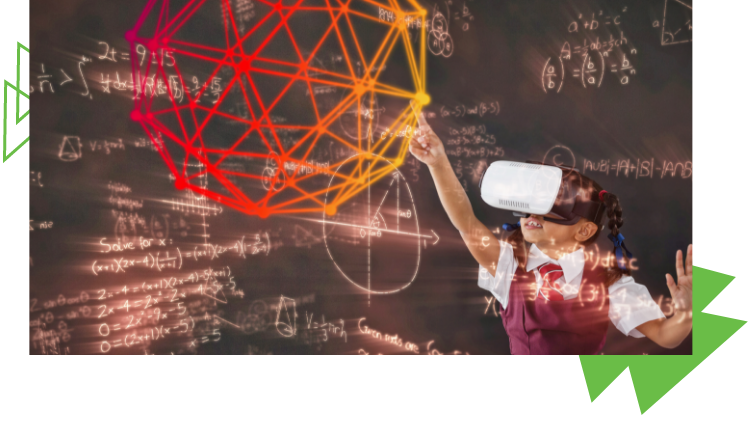
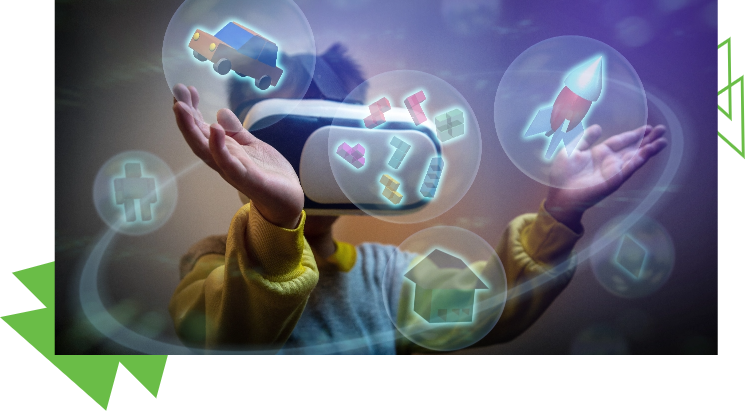
SPECIAL EDUCATION
VR can be used to provide personalised learning experiences for students with special needs. Students with visual impairments can use AR to enhance their understanding of physical objects or spaces, while VR can provide a safe and controlled environment with sensory sensitivities and practise social skills.
SPECIAL EDUCATION
VR can be used to provide personalised learning experiences for students with special needs. Students with visual impairments can use AR to enhance their understanding of physical objects or spaces, while VR can provide a safe and controlled environment with sensory sensitivities and practise social skills.

CAREER EXPLORATION
AR/VR technology has the potential to provide students with immersive career exploration experiences, which can offer them a realistic and detailed understanding of various industries and career paths. By utilizing this technology, students can visualize and interact with various environments, tasks, and challenges associated with different professions in a way that closely resembles the real life scenarios and situations.
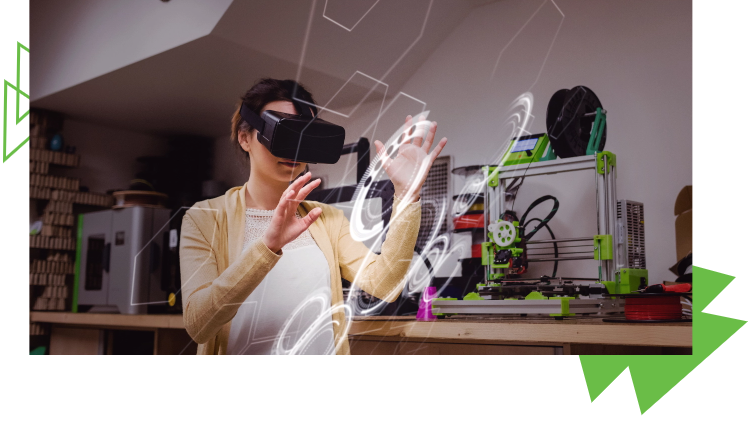
KEY BENEFITS OF AR/VR IN EDUCATION
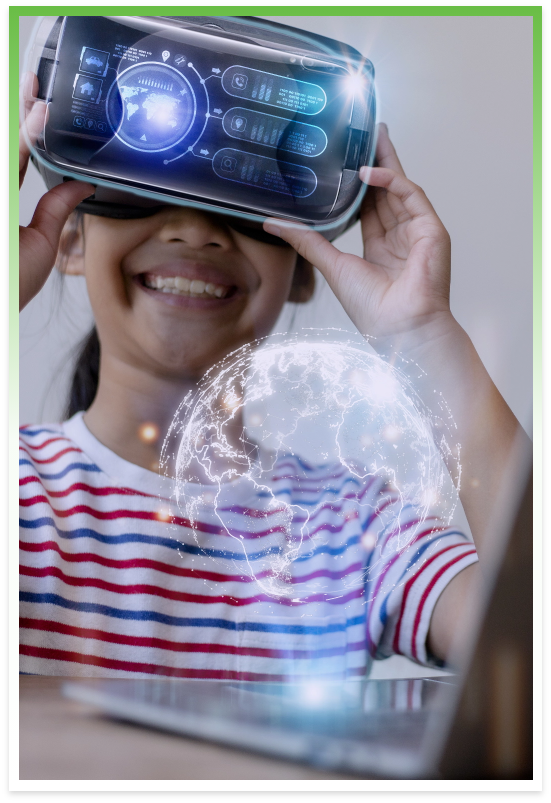
Enhanced Learning Experience
AR/VR can help students to engage with the subject matter in a more immersive and interactive way. By creating virtual environments, students can explore concepts and theories in a more tangible way, making it easier to understand and retain information.
Accessibility
By integrating AR/VR into textbooks, students can experience the material in a more hands-on and visual way, leading to improved comprehension and retention of information. Also provide interactive features, such as quizzes or simulations, that students can complete directly within the textbook.
Real-World Applications
AR/VR can be used to simulate real-world scenarios, allowing students to apply what they have learned in a practical way. This can help to bridge the gap between theory and practice, and prepare students for real-world challenges.
Visual & Interactive Experience
AR/VR technology can be used to create customised experiences for each customer, tailoring the experience to their preferences and needs
Personalised Learning
AR/VR can be used to create personalised learning experiences, allowing students to work at their own pace and focus on their individual learning needs.
OUR SOLUTIONS

3D SOLUTIONS
DevDen offers a range of 3D solutions that can ‘Revolutionize the way we teach and you learn’.
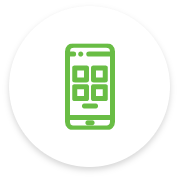
APP SOLUTIONS
We provide application solutions that are multi-device compatible. When requiring heavy visual material, as is the case in Educational content, it is best suited to have applications .

XR SOLUTIONS
With numerous learning outcomes, XR solutions are boon in taking education as we customize as per individual needs.

WEB SOLUTIONS
In the digital world, to compete and provide quality education, it is essential to have a web based solution. With extensive experience, we create top notch web based solutions.
Explore New Dimensions of Education with Immersive Technologies
Let us know how we can assist your industry in embracing the limitless possibilities of the AR, VR and Metaverse. Fill out the form below, and our team will get in touch with you promptly.
AR enhances the real-world environment, whereas VR creates completely immersive virtual environments. AR is 75% real and 25% virtual, whereas VR is 75% virtual and 25% real. In AR, no headset is required; however, in VR, a headset device is required.
Immersive technologies such as augmented reality (AR), virtual reality (VR), and mixed reality (MR) have been shown to improve learning efficiency and be more effective at teaching students than other media such as books, videos, or desktop computer experiences.
Teachers use augmented reality apps in the classroom to animate science textbooks and study flashcards to make the learning experience more enjoyable for students. Some teachers use AR to supplement their students’ homework by incorporating interactive puzzles and quizzes.
There is growing evidence that AR and VR in education, as well as the combination of the two technologies known as mixed reality, can improve student outcomes. Increase interest in subjects such as science, Improve teachers teaching skills by providing a deep level of knowledge through VR. Improving memory power by fusing emotions and education.


